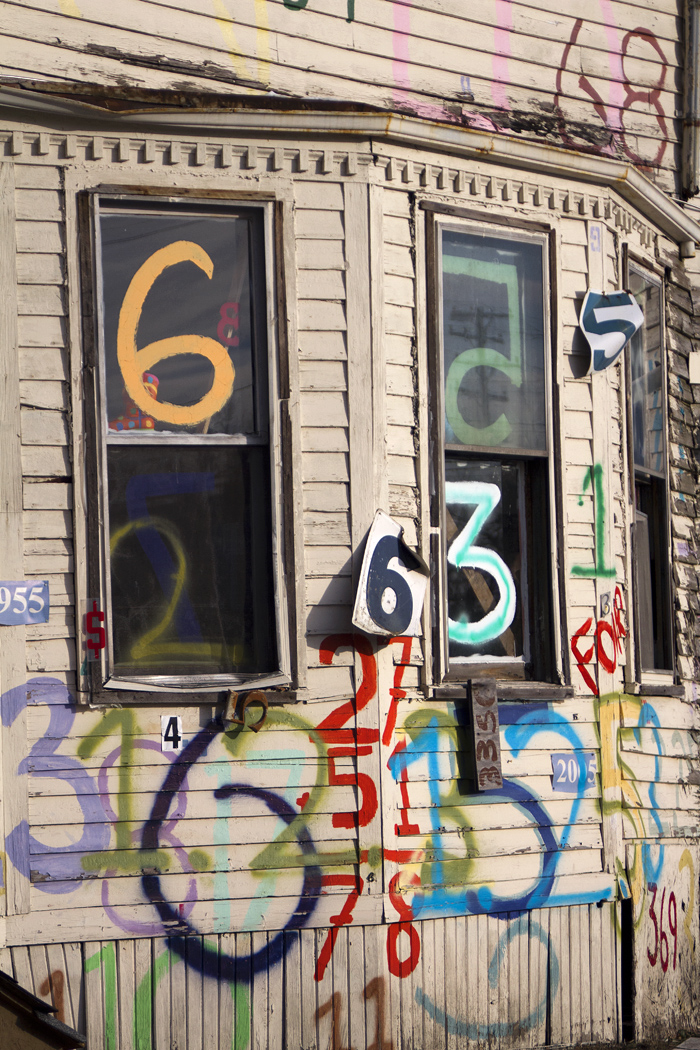
Part 2 of a series this week about the Heidelberg Project. Click here to read part 1.
The fate of the Heidelberg Project may have been determined long before fires devoured six of the art-festooned houses at the outdoor park since October.
Although the nonprofit’s budget swelled from $68,000 in 2007 to $617,00 in 2011, the Heidelberg lost ownership of most of its properties in the two-block area for failing to pay delinquent property taxes.
Now the world-famous Heidelberg Project, which spans across dozens of parcels and attracts as many as 50,000 people a year, owns just four of the lots, according to property records.
What does that mean for the future of the Heidelberg?
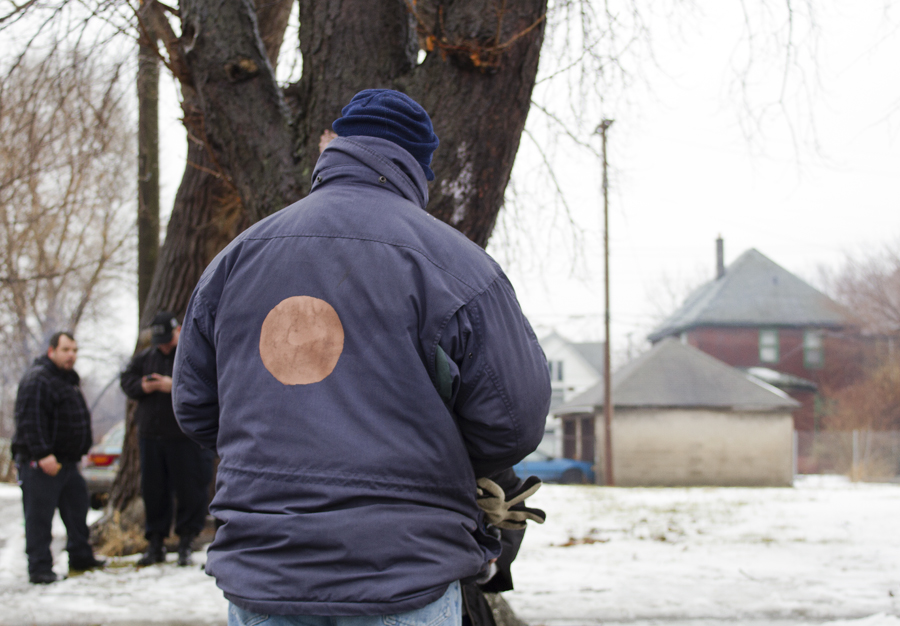
The primary property owner is the city of Detroit, which has 40 of the 50 lots between Mt. Elliot, Ellery, Elba and Heidelberg on the east side. At the stroke of a pen, Emergency Manager Kevyn Orr could sell the property to private investors, especially as the city is pressured to unload much of its 65,000 properties.
Or the city could return some of the property to the Heidelberg, but it has opted not to. As late as September of last year, the city declined to sell property within the Heidelberg area, including to the nonprofit. One of those properties was the iconic Party Animal House, which was intentionally destroyed by a fire on March 7. The Heidelberg lost the home because of unpaid property taxes in 2007.
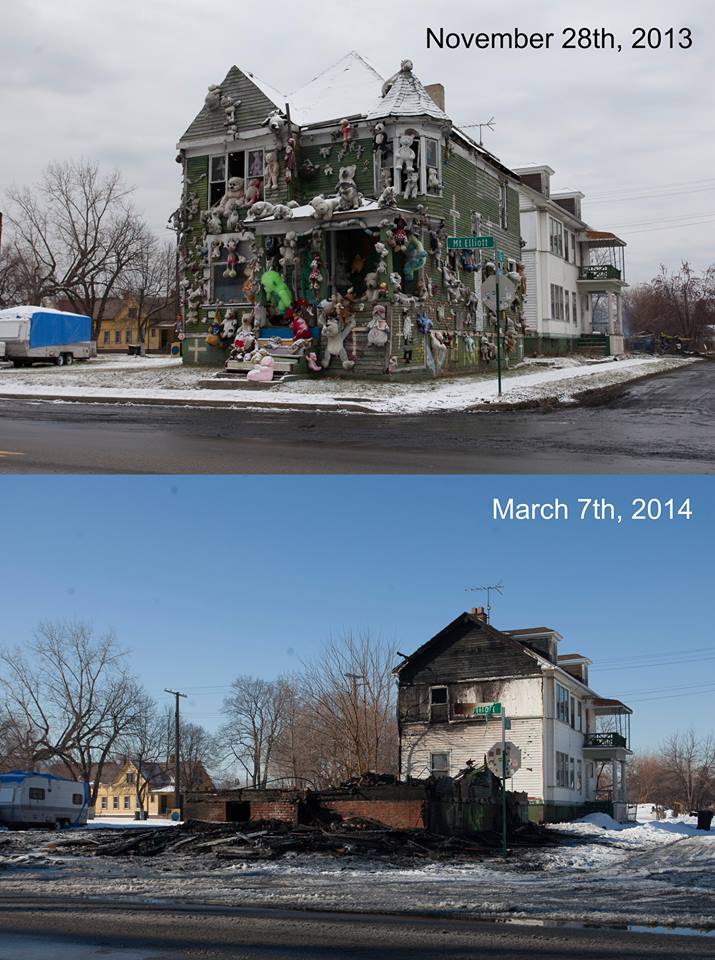
Heidelberg organizers claim they don’t have to pay property taxes because they are a nonprofit.
“I think we really need to at some point sit down as a community and think about what is the role of that art installation in the community,” Robert Anderson, director of Detroit’s Planning & Development Department, told the Free Press in December. “I know some people are opposed to it; some people support it. I think Mr. Duggan’s administration is going to have to probably have a conversation about that, especially with the recent arsons. I think it really brings into question what role is that going to play in the community.”
Despite the drama surrounding the Heidelberg property, Duggan and his office declined to answer questions about the future of the project – or whether the administration is willing to sell land back to the nonprofit. Before making big decisions about land sales, Duggan wants to hear from the community, his spokesman John Roach told me.
“We want to work with the community to develop a strategy that fits into its own vision for their neighborhood,” Roach said.
The Heidelberg’s remaining properties are two burned-down homes and two grassy lots, for which the nonprofit paid a combined $4,500:
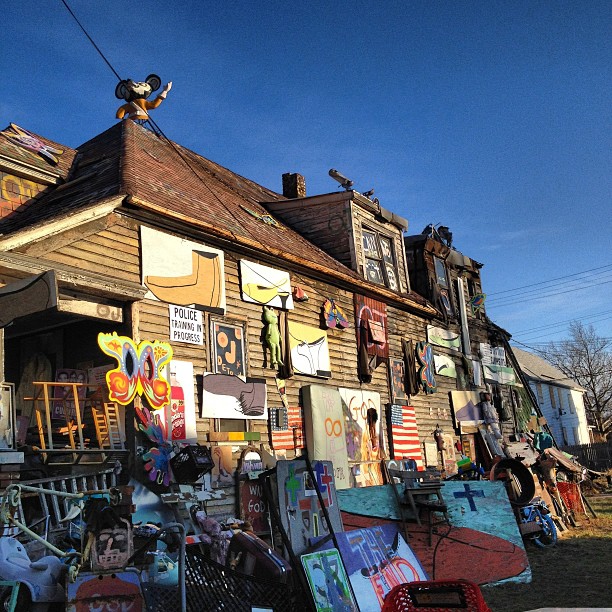

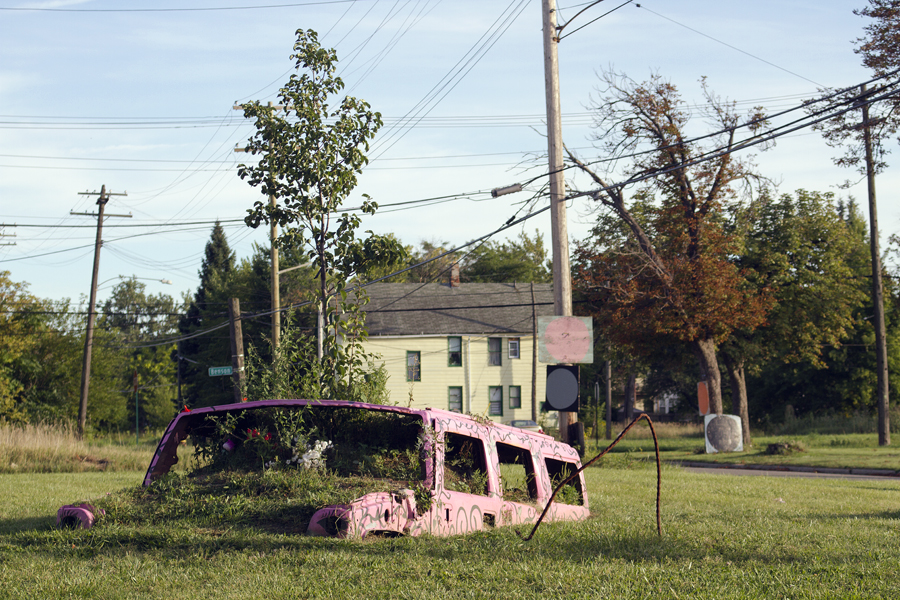
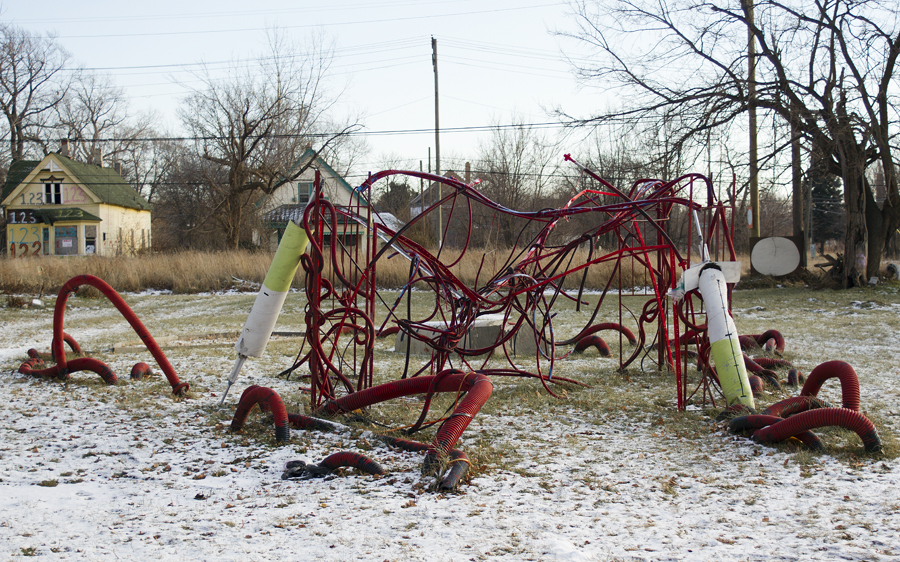
Although the Heidelberg stakes claim to two unburned decorated houses – the Number House and the Polka Dot House – the nonprofit does not own them, property tax records show. What’s more, the owners of the homes, including Guyton’s mother, are delinquent on their taxes, and the Number House was in foreclosure, as of a month ago, adding more challenges to the Heidelberg, county tax records indicate.

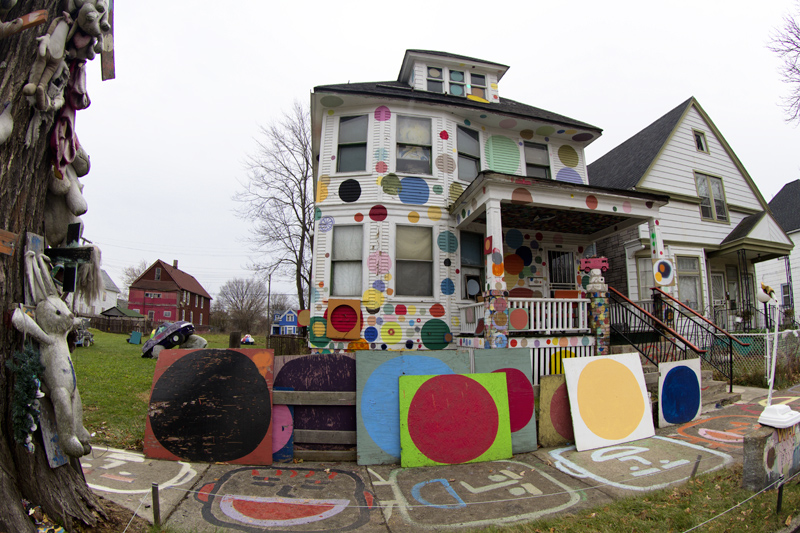
Guyton created the Heidelberg Project in 1986 after he lost three brothers to the streets. He wanted to brighten up the blight and call attention to the poverty and decay that still eat away at Detroit’s neighborhoods. Guyton slowly began decorating century-old, abandoned wood-frame houses with found objects and erected other installations in vacant lots.
The colorful transformation created what might be Detroit’s most recognizable, controversial and iconic artwork. Guyton has won praise from around the globe and challenged the notion that new and shiny is better.
But the project still had its critics, including the administrations of Mayor Dennis Archer and Mayor Coleman A. Young, both of whom ordered the demolition of the project. In all, the administrations leveled seven houses.
“We have helped to pioneer a new art form known as Creative Place Making or Art as a social practice of which there is no precedence,” Heidelberg Executive Director Jenenne Whitfield wrote to me in an email. “We have done 75% of this work at our own expense and have worked tirelessly in our city for 28 years. We believe in honesty, integrity and truth and we work with people of all races and backgrounds which is reflected in the makeup of our board, our staff and our volunteers. Now is the time for a different standard of conduct in the city of Detroit.”
On Sunday we will publish a gallery of Heidelberg photos from our readers. We are looking for pictures that are more than two years old. Do you have photos you want to share? Send your submissions to submissions@motorcitymuckraker.com and include how you would like to be credited. Also include any information about each photo. We appreciate it!
Steve Neavling
Steve Neavling lives and works in Detroit as an investigative journalist. His stories have uncovered corruption, led to arrests and reforms and prompted FBI investigations.

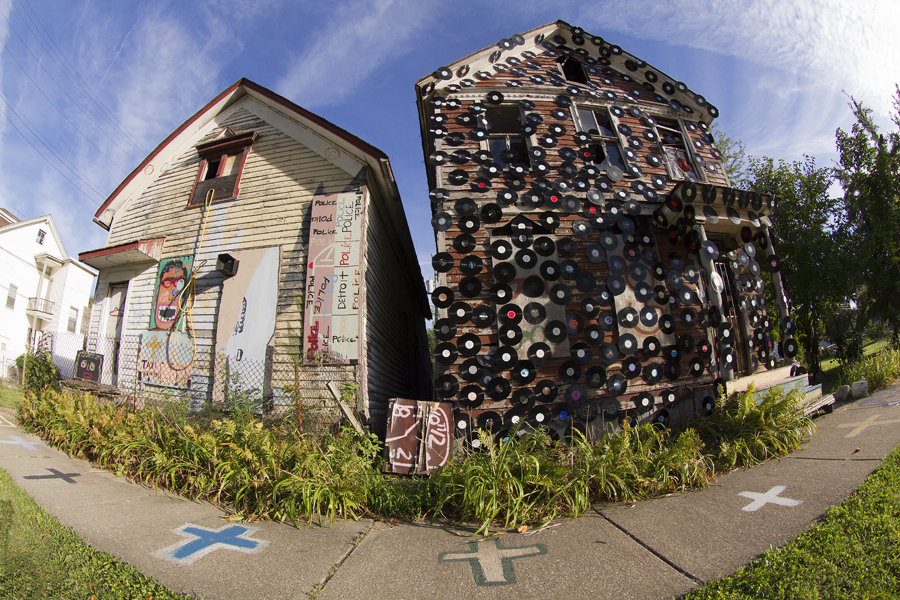
3 Responses to "Did Heidelberg Project miss chance to save itself? Explore what’s left, what’s gone"